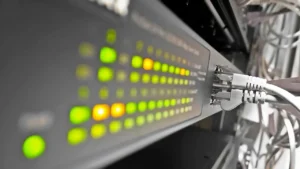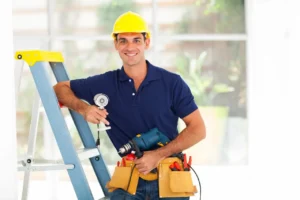The “Silver Surfer” is far more able to use technology now than they were ten years ago and with good WiFi becoming a prerequisite when choosing residential care, it’s more important than ever that it’s fit-for-purpose, fast, secure and reliable. This blog looks at why care homes need to strongly consider full building coverage when it comes to WiFi, and how to achieve it without compromising the security of their own network.
The Connected Resident
As our population ages we are introducing a new generation of care home resident, one that is familiar with technology and comfortable with it’s use. No longer are they scared of new-fangled contraptions, in fact, modern devices make it even easier for technophobes to go online.
So, what do they use the internet for?
Probably the most common reason, for communication with friends and family. A report by Statista showed that nearly 10% of facebook users in the UK are over 65. They’re using social media to keep up to date with their kids and grandkids, look at pictures and videos and staying connected to the people closest to them.
The Covid Pandemic has introduced more people to video calling using the likes of Facetime, Zoom, Whatsapp and Facebook Messenger, and they all need the internet. The care home sector was one of the hardest hit industries, and the residents in their care were denied social interaction with friends and families. Technology helped bridge that gap and keep them connected. Video calling gave them real time, high quality, interaction at a time when they were probably feeling their loneliest.
Entertainment

Puzzles, quizzes and games can help with keeping brains active, so rather than buying books of crossword puzzles or sudoku from the local newsagents, iPads and tablets are providing a never ending supply. The e-book revolution, such as the Amazon Kindle, also relies on internet connectivity to download the latest bestsellers and old classics.
Gone are the days of fighting over 5 channels on the communal telly, dusty VHS tapes from 1987 and a bundle of dog-eared mills and boon novels with the last few pages missing.
Internet access is a human right

These days it’s pretty much expected that guest WiFi will be available in most places. Coffee shops, airports, libraries, hotels, pubs and other such public places are all offering WiFi access. Care homes are no different. Offering some form of WiFi connectivity could make your care home more appealing to a potential new resident.
Flooded with WiFi

Modern WiFi systems work really well in this type of scenario, allowing for movement around the building without dropping calls and handing over seamlessly between each access point (802.11k/v/r for those that are interested) and presenting themselves as one continuous network throughout the building. Providing great coverage to communal areas and living quarters alike, even outside!
Ideally you will want each access point to be hard wired back to the main internet connection (that’s something we can help with, by the way), but for those really tricky areas, where cabling just isn’t an option, you can make use of mesh technology to provide coverage using nothing more than a mains power socket.
Security is paramount

The most basic way is to have a completely separate WiFi network and internet connection for residents. It’s simple. Physically separate networks pose no threat to security, however they will come with other problems. WiFi signals may clash with your own business WiFi solution (if you have one) causing issues to both residents and staff, and it means doubling up on the cost of hardware, cabling and internet connectivity.
A preferred method might be to introduce a single WiFi system with both a “staff” and “guest” network. The hardware behind it can segregate the data into separate virtual networks running over the same network equipment (known as V-Lans, don’t worry, we can explain this in much more detail if needed). This reduces the cost of installation and amount of hardware needed out on the floor.
Calculate your bandwidth

There are options:
Install an additional internet connection. Using the same V-Lan process as above, you can send your staff traffic over internet connection A, and your resident’s traffic over internet connection B. These keeps all of the traffic separate and means that any effects of high usage are going to be limited to residents only.
Upgrade the existing single internet connection. Not an entirely crazy idea, and comes with aditional benefits. Firstly, we can see if your premises has availability for a better broadband circuit. Whether that’s fibre to the cabinet (FttC), or fibre to the premises (FttP). Broadband speeds are increasing as exchanges are upgraded and there’s the potential for 330Mbps broadband connection, if not more!
Finally, look at a leased line internet connection. This is pure fibre, pure internet. A leased line is an internet connection dedicated solely to your premises. It’s not shared back at the green roadside cabinet, so all of the bandwidth is available to you, all of the time. Leased lines also benefit from superior service level agreements when it comes to faults, meaning any problems will be picked up and rectified sooner.
How can we help you?

We can provide you with internet connectivity from the major service providers, such as BT, Talk Talk, Virgin Media and more, through our wholesale relationships. This means we get competitive pricing and, more importantly, direct access for raising faults. This means you will only ever need to deal with us for any issues. No more waiting on hold to get through to an overseas contact centre. Simply call us, email us or log a fault through the support page on our website and we’ll take care of the issue through to resolution.
Don’t forget we can look after your telephone system too! With the shut down of the old analogue and ISDN telephone services getting ever closer (www.pstnshutdown.co.uk) moving to VoIP can help reduce operating costs and remove the need for an on-site telephone system (and associated maintenance costs).
Litenet offer a whole infrastructure package tailored to your care home, from access control and smart locks, to CCTV, Telephony and anything Internet. We pride ourselves on a consultative approach, not just selling kit.
We are always happy to talk, so pick up the phone and call us on 01908 794 794 or email us info@litenetuk.com.
Take our Survey!
We are running a survey about WiFi for care home residents until 31st March 2022. Participants will enter a draw for a £50 Amazon Voucher.


